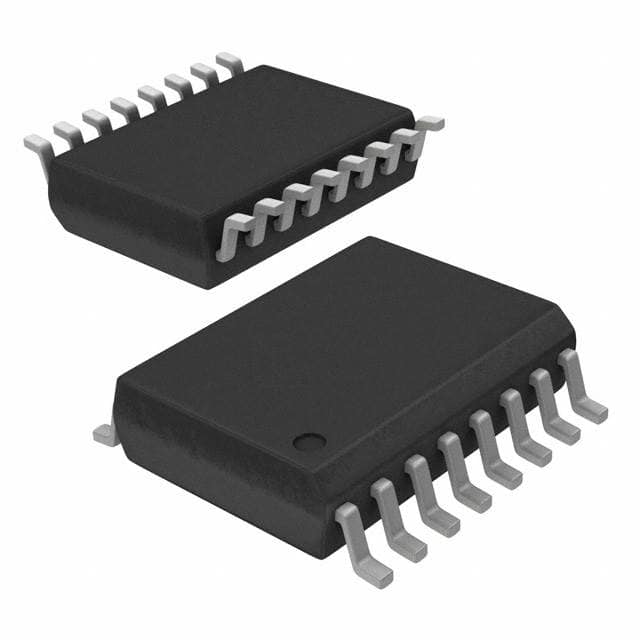Xem thông số kỹ thuật để biết chi tiết sản phẩm.

DRV134UA/1K
Overview
Category: Integrated Circuit
Use: Audio Amplifier
Characteristics: High-performance, differential line driver
Package: SOIC-8
Essence: DRV134UA/1K is a high-quality audio amplifier integrated circuit designed for driving balanced lines. It provides excellent performance and reliability in various audio applications.
Packaging/Quantity: Available in tape and reel packaging, with 2500 units per reel.
Specifications and Parameters
- Supply Voltage: 4.5V to 36V
- Input Voltage Range: ±2V
- Output Voltage Swing: ±13V
- Quiescent Current: 7.5mA
- Gain Bandwidth Product: 1.2MHz
- Common Mode Rejection Ratio: 100dB
- Operating Temperature Range: -40°C to +85°C
Pin Configuration
The DRV134UA/1K features an 8-pin Small Outline Integrated Circuit (SOIC) package. The pin configuration is as follows:
```
| | --| V- OUT+ |-- Pin 1: Output Positive --| V+ OUT- |-- Pin 2: Output Negative --| GND IN+ |-- Pin 3: Input Positive --| NC IN- |-- Pin 4: Input Negative --| NC VCC |-- Pin 5: Power Supply --| NC NC |-- Pin 6: Not Connected --| NC NC |-- Pin 7: Not Connected --| NC NC |-- Pin 8: Not Connected |___________| ```
Functional Characteristics
The DRV134UA/1K offers the following functional characteristics:
- High common-mode rejection ratio for noise rejection
- Low distortion and noise for high-quality audio reproduction
- Wide supply voltage range for flexibility in various applications
- Differential input and output for balanced line driving
- Internal thermal shutdown protection
Advantages and Disadvantages
Advantages: - High-performance audio amplifier - Reliable and durable design - Excellent noise rejection capabilities - Flexible supply voltage range
Disadvantages: - Limited pin configuration options - Not suitable for single-ended audio applications
Applicable Range of Products
The DRV134UA/1K is widely used in audio equipment and systems that require balanced line driving. It is commonly found in professional audio mixers, amplifiers, and recording equipment.
Working Principles
The DRV134UA/1K operates by amplifying the differential input signal and driving it through the balanced output lines. It maintains a high common-mode rejection ratio to minimize noise interference and distortion in the audio signal.
Detailed Application Field Plans
The DRV134UA/1K can be applied in various audio systems, including:
- Professional audio mixers and consoles
- Public address (PA) systems
- Studio recording equipment
- Home theater systems
- Automotive audio systems
Detailed Alternative Models
Some alternative models to the DRV134UA/1K include:
- INA134 - Precision, low-noise differential line receiver
- SSM2142 - Balanced line driver and receiver
- LT1364 - Low-distortion, high-speed operational amplifier
- THAT1646 - Balanced line driver with integrated mute function
- OPA1632 - Fully-differential audio amplifier
5 Common Technical Questions and Answers
Q: What is the maximum supply voltage for the DRV134UA/1K? A: The DRV134UA/1K can handle a maximum supply voltage of 36V.
Q: Can the DRV134UA/1K be used in single-ended audio applications? A: No, the DRV134UA/1K is specifically designed for balanced line driving and is not suitable for single-ended applications.
Q: What is the operating temperature range of the DRV134UA/1K? A: The DRV134UA/1K can operate within a temperature range of -40°C to +85°C.
Q: Does the DRV134UA/1K have built-in thermal protection? A: Yes, the DRV134UA/1K features internal thermal shutdown protection to prevent overheating.
Q: What is the gain bandwidth product of the DRV134UA/1K? A: The DRV134UA/1K has a gain bandwidth product of 1.2MHz.
This encyclopedia entry provides an overview of the DRV134UA/1K, including its category, use, characteristics, package, specifications, pin configuration, functional characteristics, advantages and disadvantages, applicable range of products, working principles, detailed application field plans, alternative models, and

